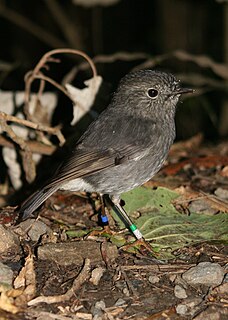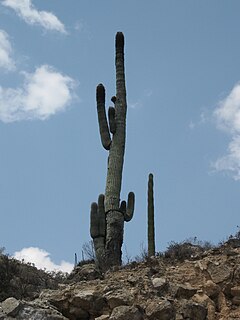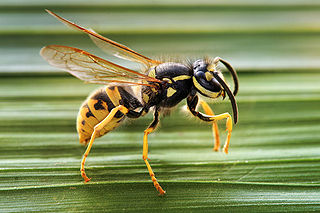Atractylodes is a genus in the sunflower family.

Petroica is a genus of Australasian robins, named due to their red and pink markings. They are not closely related to the European robin nor the American robin. The generic name is derived from the Ancient Greek words petro- "rock" and oikos "home", from birds' habits of sitting on rocks.

The tomtit is a small passerine bird in the family Petroicidae, the Australian robins. It is endemic to the islands of New Zealand, ranging across the main islands as well as several of the outlying islands. It has several other English names as well. There are several sub-species showing considerable variation in plumage and size. The species is not threatened and has adapted to the changes made to New Zealand's biodiversity.

The big-headed pantanal swamp turtle or pantanal swamp turtle is a species of turtle in the Chelidae family found in Argentina, Bolivia, Brazil, and Paraguay.

Acanthochelys is a genus of turtles, the spiny swamp turtles, in the family Chelidae, subfamily Chelinae, found in South America. Until recently, the species of this genus were considered to be members of the genus Platemys, but were moved to the resurrected genus originally described by Gray (1873) based on the type species by monotypy Acanthochelys spixii.

Hemiauchenia, synonym Tanupolama, is a genus of lamine camelids that evolved in North America in the Miocene period approximately 10 million years ago. This genus diversified and moved to South America in the Early Pleistocene, as part of the Great American Biotic Interchange, giving rise to modern lamines. The genus became extinct at the end of the Pleistocene.
Psaeropterella macrocephala is a species of ulidiid or picture-winged fly in the genus Psaeropterella of the family Tephritidae.

Neobuxbaumia macrocephala is a long-lived columnar cactus
Hypsopsetta macrocephala is a flatfish of the family Pleuronectidae. It is a demersal fish that lives on bottoms in the tropical waters of the eastern Pacific and the Gulf of California.
Emys macrocephala may refer to:
The Chatham tomtit is a subspecies of tomtit found on some of the smaller islands of New Zealand. It is most similar in plumage to the South Island tomtit, the nominate subspecies. The New Zealand government is implementing a plan to help this species and other bird species recover. The holotype is in the collection of the Museum of New Zealand Te Papa Tongarewa.
Percina macrocephala, the longhead darter, is a species of freshwater fish. It is one of the 324 fish species found in Tennessee.

Malayemys is a genus of turtles in the family Geoemydidae. It was considered monotypic until 2004. It is found in several countries of Southeast Asia.

Hyperia macrocephala is a species of zooplankton, an amphipod in the family Hyperiidae.

The Malayan snail-eating turtle is a species of turtle in Malayemys genus of the family Geoemydidae.

Centaurea macrocephala is a species of flowering plant in the aster family, Asteraceae, and a member of the thistle tribe, Cynareae. It has many common names, including bighead knapweed, big yellow centaurea, lemon fluff, yellow bachelor's button, yellow hardhat, and Armenian basketflower.
Galinsoga macrocephala is a South American species of flowering plant in the daisy family. It has been found only in Venezuela.
Cassinia macrocephala is a plant native to central-northern New South Wales in eastern Australia.
Afrepipona lamptoensis is a species of wasp in the Vespidae family. It was described by Giordani Soika in 1965.
Gobiobotia macrocephala is a species of small freshwater fish in the family Cyprinidae. It is endemic to South Korea.











